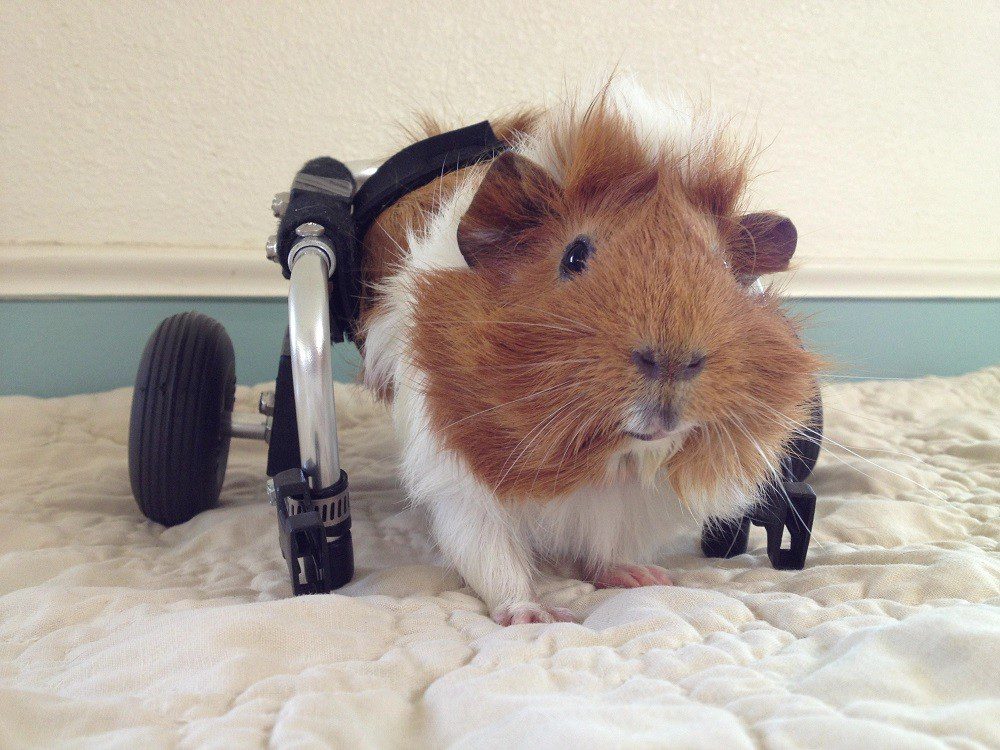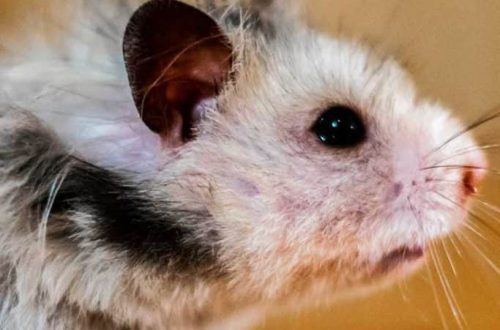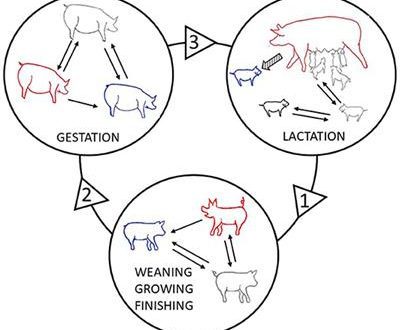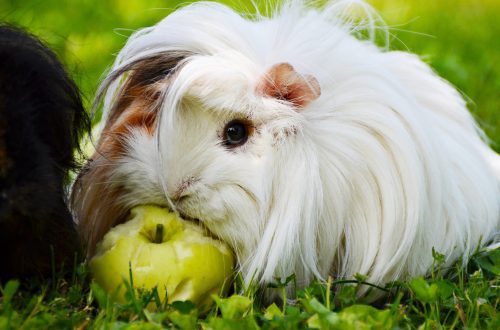
Paralysis in guinea pigs
Paralysis in guinea pigs belongs to the category of diseases on which there is still no consensus among veterinarians and the causes of which are still not clearly defined.
Paralysis of guinea pigs most often means paralysis of the hind limbs. In most cases, even experienced ratologists are at an impasse. Complicated and expensive studies, which, by the way, can not be carried out everywhere, often do not reveal any deviations in the state of the guinea pig.
In recent years, fortunately, experts and breeders of pigs have noticed that there are some precursors leading to paralysis of the hind legs. Perhaps the mystery of paralysis in guinea pigs will soon be solved. For now, there are only a few hypotheses.
Paralysis in guinea pigs belongs to the category of diseases on which there is still no consensus among veterinarians and the causes of which are still not clearly defined.
Paralysis of guinea pigs most often means paralysis of the hind limbs. In most cases, even experienced ratologists are at an impasse. Complicated and expensive studies, which, by the way, can not be carried out everywhere, often do not reveal any deviations in the state of the guinea pig.
In recent years, fortunately, experts and breeders of pigs have noticed that there are some precursors leading to paralysis of the hind legs. Perhaps the mystery of paralysis in guinea pigs will soon be solved. For now, there are only a few hypotheses.
Contents
Trauma-induced paralysis in guinea pigs
The first step in suspecting paralysis in a guinea pig is to exclude the possibility of injury to the mumps. Even if you did not see how the mumps falls, this does not mean that there could not have been an injury. Guinea pigs are animals with a long and rather fragile spine, so even an unsuccessful jump from a small height in an aviary or cage can end in an unsuccessful landing. Trauma must be ruled out first.
If there is a suspicion, then move the pig in a calm, small and enclosed space. This is the only case when the statement “the smaller the cage, the better” has the right to exist! With paralysis, the mumps hardly moves, so food and water should be, as they say, under the nose. Well, of course, at the slightest suspicion of paralysis as a result of an injury, it will be necessary to see a veterinarian.
An x-ray will show if there are fractures in the legs or in the spine. A guinea pig with fractures has every chance of recovery, the success and speed of which will largely depend on the location of the fracture and the degree of damage.
For symptoms and treatment of fractures and fractures in guinea pigs, see Fractures in Guinea Pigs.
The first step in suspecting paralysis in a guinea pig is to exclude the possibility of injury to the mumps. Even if you did not see how the mumps falls, this does not mean that there could not have been an injury. Guinea pigs are animals with a long and rather fragile spine, so even an unsuccessful jump from a small height in an aviary or cage can end in an unsuccessful landing. Trauma must be ruled out first.
If there is a suspicion, then move the pig in a calm, small and enclosed space. This is the only case when the statement “the smaller the cage, the better” has the right to exist! With paralysis, the mumps hardly moves, so food and water should be, as they say, under the nose. Well, of course, at the slightest suspicion of paralysis as a result of an injury, it will be necessary to see a veterinarian.
An x-ray will show if there are fractures in the legs or in the spine. A guinea pig with fractures has every chance of recovery, the success and speed of which will largely depend on the location of the fracture and the degree of damage.
For symptoms and treatment of fractures and fractures in guinea pigs, see Fractures in Guinea Pigs.
Guinea pig paralysis due to stroke
Paralysis can be a consequence of a stroke in a guinea pig. Stroke is bad.
Sometimes it’s just an atypical slight tilt of the head in a mumps or an unusual eye movement, but more often a stroke manifests itself much more dramatically. Short uncharacteristic chaotic and erratic movements are possible, as if the pig is rushing around the cage. And then paralysis sets in. Most importantly, don’t panic! Guinea pigs can recover even after a stroke.
You can’t do without the advice of a veterinarian. Although in fact there is little that doctors can do for mumps in this case. But the diagnosis will be made accurately and will recommend drugs to prevent dehydration. The most important thing after a stroke is complete rest. In many cases, gilts begin to recover after a few hours, and begin to get up and walk over the next few days or weeks. Sometimes, after a stroke, a pig’s head remains slightly tilted to one side, but this does not prevent her from living a normal life.
Paralysis can be a consequence of a stroke in a guinea pig. Stroke is bad.
Sometimes it’s just an atypical slight tilt of the head in a mumps or an unusual eye movement, but more often a stroke manifests itself much more dramatically. Short uncharacteristic chaotic and erratic movements are possible, as if the pig is rushing around the cage. And then paralysis sets in. Most importantly, don’t panic! Guinea pigs can recover even after a stroke.
You can’t do without the advice of a veterinarian. Although in fact there is little that doctors can do for mumps in this case. But the diagnosis will be made accurately and will recommend drugs to prevent dehydration. The most important thing after a stroke is complete rest. In many cases, gilts begin to recover after a few hours, and begin to get up and walk over the next few days or weeks. Sometimes, after a stroke, a pig’s head remains slightly tilted to one side, but this does not prevent her from living a normal life.

Paralysis in guinea pigs due to vitamin C deficiency
Scientifically proven fact: in laboratory guinea pigs, a combined deficiency of vitamins C and E leads to paralysis. The body of guinea pigs, like the human body, cannot generate vitamin C on its own, so a deficiency of this vitamin is highly undesirable. The source of vitamin C is fresh vegetables, fruits and quality food.
Vitamin C deficiency can lead to scurvy, a disease whose symptoms are very vague in guinea pigs. Scurvy does not cause paralysis, but this disease causes lethargy and apathy.
Symptoms of scurvy in guinea pigs:
- lethargy and apathy, drowsiness,
- dull fur,
- weakness,
- inflamed or stiff joints.
Some of these symptoms in combination can easily be mistaken for paralysis. Malnourished guinea pigs lacking other vitamins and minerals can develop true paralysis, which often carries a poor prognosis.
An adult guinea pig needs about 25 mg of vitamin C every day. High-quality food + vegetables and fruits (especially sweet peppers) cover the daily allowance. Guinea pigs suffering from scurvy may need a double dose of about 50 mg per day to recover. In such cases, vitamin C is prescribed in the form of a feed supplement. Noticeable improvements, as a rule, occur within 5-7 days.
Scientifically proven fact: in laboratory guinea pigs, a combined deficiency of vitamins C and E leads to paralysis. The body of guinea pigs, like the human body, cannot generate vitamin C on its own, so a deficiency of this vitamin is highly undesirable. The source of vitamin C is fresh vegetables, fruits and quality food.
Vitamin C deficiency can lead to scurvy, a disease whose symptoms are very vague in guinea pigs. Scurvy does not cause paralysis, but this disease causes lethargy and apathy.
Symptoms of scurvy in guinea pigs:
- lethargy and apathy, drowsiness,
- dull fur,
- weakness,
- inflamed or stiff joints.
Some of these symptoms in combination can easily be mistaken for paralysis. Malnourished guinea pigs lacking other vitamins and minerals can develop true paralysis, which often carries a poor prognosis.
An adult guinea pig needs about 25 mg of vitamin C every day. High-quality food + vegetables and fruits (especially sweet peppers) cover the daily allowance. Guinea pigs suffering from scurvy may need a double dose of about 50 mg per day to recover. In such cases, vitamin C is prescribed in the form of a feed supplement. Noticeable improvements, as a rule, occur within 5-7 days.
Guinea pig paralysis due to calcium deficiency
One of the least understood causes of paralysis in guinea pigs is related to calcium. Specialists and breeders constantly talk about the dangers of excess calcium in the pig diet, scaring everyone with stones in the bladder. However, a diet low in calcium can also cause problems.
However, calcium-deficient paralysis of the hind limbs in guinea pigs is not always associated with diet. Pregnant and lactating females are at risk, but healthy guinea pigs can also develop the disease. Elderly pigs, young piglets, large pigs, small pigs – there is no clear relationship. It’s like playing roulette.
The cause of calcium-related paralysis is still not clear. Calcium deficiency can cause muscle spasms, but can be completely asymptomatic, eventually leading to paralysis.
Unfortunately, making a diagnosis can also be problematic. The results of the blood test may be normal, not exceeding the reference values. If the veterinarian cannot find another cause of paralysis in the mumps, calcium supplements may be worth trying. In most cases, 1 ml (30 mg) of liquid calcium twice a day for 2-3 days will show results. If it’s a calcium deficiency, improvements will come in a couple of days.
One of the least understood causes of paralysis in guinea pigs is related to calcium. Specialists and breeders constantly talk about the dangers of excess calcium in the pig diet, scaring everyone with stones in the bladder. However, a diet low in calcium can also cause problems.
However, calcium-deficient paralysis of the hind limbs in guinea pigs is not always associated with diet. Pregnant and lactating females are at risk, but healthy guinea pigs can also develop the disease. Elderly pigs, young piglets, large pigs, small pigs – there is no clear relationship. It’s like playing roulette.
The cause of calcium-related paralysis is still not clear. Calcium deficiency can cause muscle spasms, but can be completely asymptomatic, eventually leading to paralysis.
Unfortunately, making a diagnosis can also be problematic. The results of the blood test may be normal, not exceeding the reference values. If the veterinarian cannot find another cause of paralysis in the mumps, calcium supplements may be worth trying. In most cases, 1 ml (30 mg) of liquid calcium twice a day for 2-3 days will show results. If it’s a calcium deficiency, improvements will come in a couple of days.

Guinea pig paralysis caused by infection
Above, we considered cases where paralysis in gilts is relatively easy to treat (in most cases) and, with timely treatment, leads to recovery.
Paralysis caused by infections is much worse.
“Guinea pig paralysis” – this is often called an infectious disease that occurs with inflammation of the spinal cord and brain. The causative agent of this spontaneous disease has long been considered a retrovirus of a neurological nature, but from the latest research it follows that this should be an analogue of infantile paralysis caused by poliovirus (poliomyelitis).
The causative agent is transmitted by droplets, through secretions and through direct contact of animals. People can also transmit the virus through their hands and clothing. Transmission of the virus also occurs from mother to child in the womb and when the virus enters the gastrointestinal tract. The incubation period is from 9 to 23 days.
When the virus enters orally, its multiplication can be facilitated by damage to the oral mucosa, which is an “open gate” for the virus. There, the virus multiplies and the animal cannot chew and swallow food normally (swallowing paralysis). Problems with chewing and swallowing, if there are no problems with the teeth, indicate the possibility of paralysis in guinea pigs!
“Classic paralysis” occurs when the virus securely occupies the brain and spinal cord. Damage to the nerves leads to damage to the control of excitability, which is expressed in painful movement, reaching the complete paralysis of the hind limbs. Later comes paralysis of the intestines and bladder.
The first symptoms of guinea pig paralysis caused by infection are:
- food refusal,
- slightly elevated temperature
- general ill health
- hunched Pig Pose,
- breathing problems
- trembling and, in the further course, convulsive twitching of the muscles of the neck, back and shoulders.
Death often occurs after 3-4 weeks, with a rapid course of the disease after 2-10 days.
Unfortunately, it is very difficult to establish an exact diagnosis.
Above, we considered cases where paralysis in gilts is relatively easy to treat (in most cases) and, with timely treatment, leads to recovery.
Paralysis caused by infections is much worse.
“Guinea pig paralysis” – this is often called an infectious disease that occurs with inflammation of the spinal cord and brain. The causative agent of this spontaneous disease has long been considered a retrovirus of a neurological nature, but from the latest research it follows that this should be an analogue of infantile paralysis caused by poliovirus (poliomyelitis).
The causative agent is transmitted by droplets, through secretions and through direct contact of animals. People can also transmit the virus through their hands and clothing. Transmission of the virus also occurs from mother to child in the womb and when the virus enters the gastrointestinal tract. The incubation period is from 9 to 23 days.
When the virus enters orally, its multiplication can be facilitated by damage to the oral mucosa, which is an “open gate” for the virus. There, the virus multiplies and the animal cannot chew and swallow food normally (swallowing paralysis). Problems with chewing and swallowing, if there are no problems with the teeth, indicate the possibility of paralysis in guinea pigs!
“Classic paralysis” occurs when the virus securely occupies the brain and spinal cord. Damage to the nerves leads to damage to the control of excitability, which is expressed in painful movement, reaching the complete paralysis of the hind limbs. Later comes paralysis of the intestines and bladder.
The first symptoms of guinea pig paralysis caused by infection are:
- food refusal,
- slightly elevated temperature
- general ill health
- hunched Pig Pose,
- breathing problems
- trembling and, in the further course, convulsive twitching of the muscles of the neck, back and shoulders.
Death often occurs after 3-4 weeks, with a rapid course of the disease after 2-10 days.
Unfortunately, it is very difficult to establish an exact diagnosis.
plague of guinea pigs
There is no single unambiguous material about guinea pig plague. It is often mentioned in connection with paralysis in guinea pigs. This is a viral or bacterial disease that is highly contagious and absolutely deadly.
It is likely that the concept of “guinea pig plague” as well as “rabbit plague” and “rodent plague” is an outdated name for Tularemia (Francisella tularensis). The distribution area is northern Europe, as the habitat of the main carriers of the disease – lemmings. Pigs became infected during animal experiments, as they are very susceptible to the virus. Tularemia is a disease that in our time for pigs has no clinical significance.
There is no single unambiguous material about guinea pig plague. It is often mentioned in connection with paralysis in guinea pigs. This is a viral or bacterial disease that is highly contagious and absolutely deadly.
It is likely that the concept of “guinea pig plague” as well as “rabbit plague” and “rodent plague” is an outdated name for Tularemia (Francisella tularensis). The distribution area is northern Europe, as the habitat of the main carriers of the disease – lemmings. Pigs became infected during animal experiments, as they are very susceptible to the virus. Tularemia is a disease that in our time for pigs has no clinical significance.
Guinea pig paralysis is not a hopeless situation in most cases. Most likely, the disease is treated, and with proper care, the mumps will get back on their feet. And even start to popcorn.
Don’t give up on your guinea pig too soon. Even if she doesn’t fully recover, she can adapt to another life better than you think. Food and water in the access area, a small cage, and maybe even a special wheelchair – that’s all that may be needed for a pet in trouble.
Guinea pig paralysis is not a hopeless situation in most cases. Most likely, the disease is treated, and with proper care, the mumps will get back on their feet. And even start to popcorn.
Don’t give up on your guinea pig too soon. Even if she doesn’t fully recover, she can adapt to another life better than you think. Food and water in the access area, a small cage, and maybe even a special wheelchair – that’s all that may be needed for a pet in trouble.





